Visiting America’s national parks offers an unparalleled opportunity to connect with nature, witness majestic landscapes, and partake in unforgettable outdoor adventures. Each park, with its unique ecosystems and geographical features, presents a different face across the seasons, making the timing of your visit crucial. Optimal visit times vary, influenced by weather conditions, wildlife activity, and visitor traffic. Understanding these factors can significantly enhance your experience, allowing you to witness the parks at their most vibrant, serene, or awe-inspiring. This guide aims to highlight the best times to visit some of America’s most beloved national parks, ensuring your trip is both memorable and aligned with what you seek to discover.
Contents
Yellowstone National Park
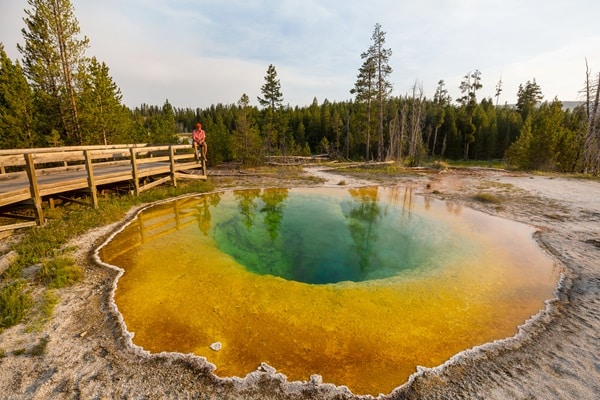
Spring in Yellowstone is a season of rejuvenation and awakening. As the snow recedes, the park reveals its lush meadows and flowing rivers, becoming a nurturing ground for newborn wildlife. Visitors in spring are treated to the sights of baby animals and the blooming flora set against a backdrop of still-snowy peaks. The weather can be unpredictable, ranging from warm afternoons to chilly mornings, offering an actual spring experience. This season is perfect for those looking to experience Yellowstone’s wildlife awakening with fewer crowds.
Summer brings Yellowstone to life with its full glory, offering warm temperatures and accessible park roads and trails. This is the peak season for visitors, drawn by the promise of hiking, wildlife viewing, and the famous geysers. The park’s vast landscapes are easily navigable, and the days are long, allowing ample time for exploration. However, the popularity of summer means planning ahead is crucial to avoid the large crowds and fully enjoy the park’s offerings. Despite the crowds, the unparalleled access to Yellowstone’s wonders makes summer a captivating time to visit.
Yosemite National Park
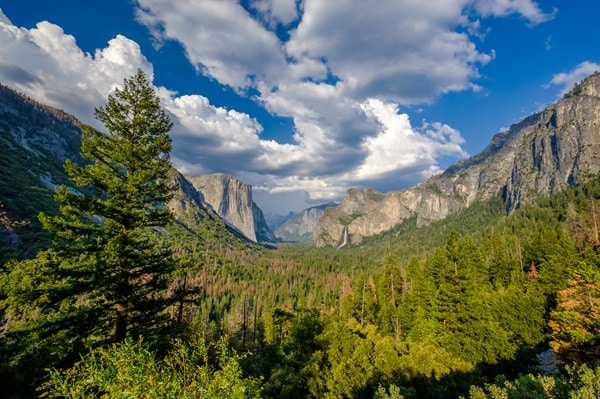
Spring in Yosemite is synonymous with the spectacular flow of its waterfalls, fueled by the melting snow from the Sierra Nevada. The valley comes alive with the sound of rushing water, and the meadows are dotted with wildflowers. This season offers a breathtaking display of natural beauty, with comfortable temperatures for hiking and exploration. At their peak, the waterfalls provide a mesmerizing spectacle that draws photographers and nature enthusiasts alike. Spring in Yosemite not only promises beauty but also fewer crowds, making it a serene time to experience the park’s majesty.
Fall in Yosemite transforms the park into a canvas of warm colors, with golds and reds sweeping across the landscape. This season offers a tranquil atmosphere as the summer crowds have dispersed, leaving a peaceful environment for hiking and sightseeing. The weather remains mild, ideal for exploring the valley and its iconic granite formations under the soft autumn light. Wildlife is more visible as animals prepare for winter, adding an extra layer of wonder to your visit. For those seeking solitude and natural beauty, fall in Yosemite provides a perfect blend of both.
Grand Canyon National Park
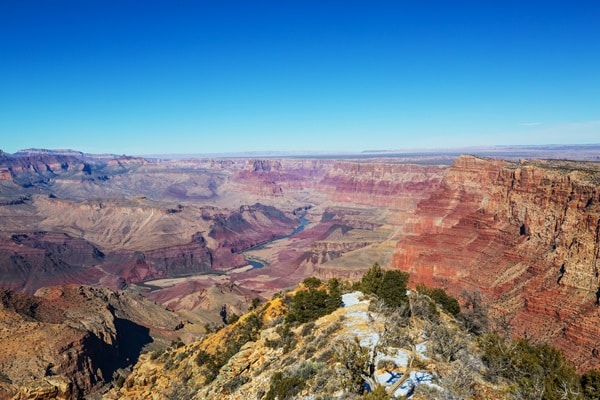
Spring at the Grand Canyon is marked by a dramatic awakening as the park sheds its winter quiet for vibrant activity. The temperatures are mild, ideal for hiking into the canyon or along the rim, offering breathtaking views without the extreme heat of summer. This season sees a gradual increase in visitors, but it’s before the peak season, allowing for a more relaxed exploration of the park’s vastness. The Colorado River, a lifeline of the canyon, flows powerfully, a testament to the winter snowmelt. Spring’s mild weather and moderate crowds make it an optimal time to visit for those looking to fully immerse in the Grand Canyon’s grandeur.
Fall in the Grand Canyon is equally appealing, with comfortable temperatures and the changing colors of the deciduous trees contrasting against the stark red rocks. This season is perfect for photographers and nature lovers, offering unique lighting and less crowded viewpoints. Hiking conditions are ideal, with clear skies and cool breezes accompanying visitors along the trails. The South Rim remains open year-round, providing access to some of the most iconic vistas of the canyon. Fall’s serene beauty and favorable conditions make it a preferred time for many to explore the depths and heights of the Grand Canyon.
Zion National Park
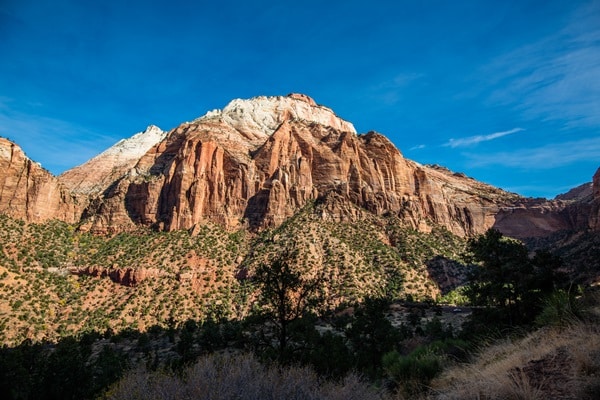
Spring in Zion National Park is a celebration of color and life. The desert blooms with wildflowers, and the winter snow melting off the high plateaus feeds the streams and waterfalls, creating a lush, vibrant landscape. The temperatures are mild, making it an ideal time for hiking and canyoneering. The park’s famous trails, such as Angels Landing and the Narrows, are more accessible and less crowded, allowing for a peaceful communion with nature. For those eager to explore Zion’s unique geography and biodiverse ecosystems, spring presents the perfect conditions.
Fall brings a magnificent transformation to Zion as the canyon’s foliage turns to shades of orange, red, and yellow. The cooler temperatures and reduced rainfall make it an excellent time for hiking, with comfortable conditions throughout the day. This season also sees a decrease in visitor numbers, offering a more solitary experience on the trails and at popular landmarks. The clear, crisp air enhances the stunning vistas, making every viewpoint and photograph even more breathtaking. For visitors seeking both adventure and tranquility, fall in Zion National Park offers an unmatched backdrop.
Rocky Mountain National Park
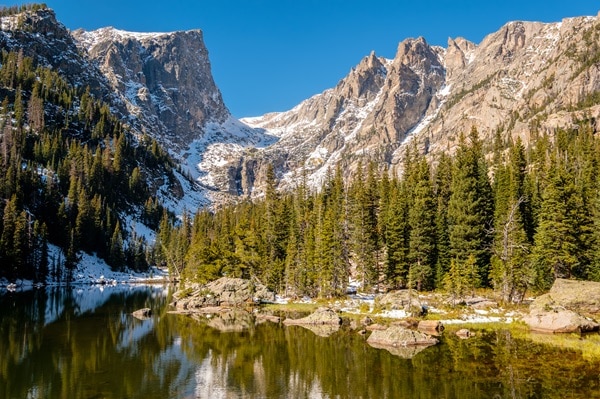
Summer in Rocky Mountain National Park is a window to the park’s full majesty, with wildflowers, blanketing meadows, and wildlife roaming freely. The higher elevation trails that are inaccessible during other seasons open up, offering hikers breathtaking views and serene alpine landscapes. The park is alive with activity, from scenic drives along Trail Ridge Road to peaceful picnics beside alpine lakes. While summer is the busiest season, the park’s vastness allows for moments of solitude and connection with nature. For those seeking the quintessential Rocky Mountain experience, summer provides the perfect setting for adventure and discovery.
As fall approaches, the Rocky Mountains undergo a dramatic transformation, with aspen trees turning a vibrant gold and elk beginning their rutting season. The cooler temperatures make hiking and wildlife watching particularly enjoyable, and the thinner crowds allow for a more intimate experience of the park’s natural beauty. This is also a prime time for photography, with the changing foliage and active wildlife offering endless opportunities to capture the essence of the Rockies. Fall in Rocky Mountain National Park is a season of dynamic change, appealing to those who appreciate nature’s rhythms and cycles.
Glacier National Park

Summer in Glacier National Park is the only time when the entire Going-to-the-Sun Road is open, providing full access to the park’s over one million acres of mountains, lakes, and forests. The wildflowers are in full bloom, and the high-altitude trails are snow-free and ready for exploration. This season offers the best chance for visitors to experience Glacier’s diverse ecosystems, from pristine alpine meadows to rugged mountain peaks. The daylight lasts longer, allowing more time for adventure, whether it’s hiking, boating, or simply enjoying the panoramic views. Summer is Glacier’s peak season, so while the beauty is unmatched, visitors should plan for the presence of fellow nature enthusiasts.
Early fall in Glacier National Park presents a unique blend of solitude and natural splendor, with fewer tourists and the landscapes beginning to hint at the coming winter. The weather remains favorable for outdoor activities, and the changing colors of the foliage provide a spectacular contrast against the park’s glacial lakes and rugged mountains. Wildlife is more visible as animals prepare for winter, offering exceptional opportunities for sightings. The reduced visitor numbers allow for a more peaceful exploration of the park, making early fall an ideal time for those seeking tranquility amidst Glacier’s breathtaking landscapes.
Great Smoky Mountains National Park
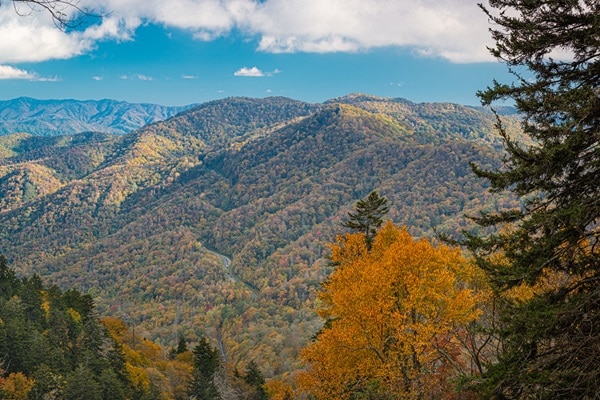
Spring in the Great Smoky Mountains heralds a period of renewal and beauty. The park becomes a tapestry of blooming wildflowers, with over 1,500 varieties creating a riot of color against the backdrop of misty mountains. The weather is mild, perfect for exploring the park’s extensive network of trails, historic sites, and waterfalls. This season is also an excellent time for bird watching, as many species migrate through the area. Spring in the Smokies offers visitors the chance to experience the lush, vibrant side of the park, away from the high traffic of summer and fall.
Fall in the Great Smoky Mountains is a spectacle of nature as the foliage transforms into brilliant shades of red, orange, and gold. This season is considered one of the best times to visit, attracting leaf peepers from all over to witness the stunning display. The cooler temperatures are ideal for hiking and enjoying the crisp mountain air, and the park hosts a variety of events celebrating Appalachian culture. The visibility of wildlife increases as animals become more active in preparation for winter. For many, fall represents the peak of the Great Smoky Mountains’ beauty, offering a compelling reason to explore its rich biodiversity and scenic landscapes.
Acadia National Park
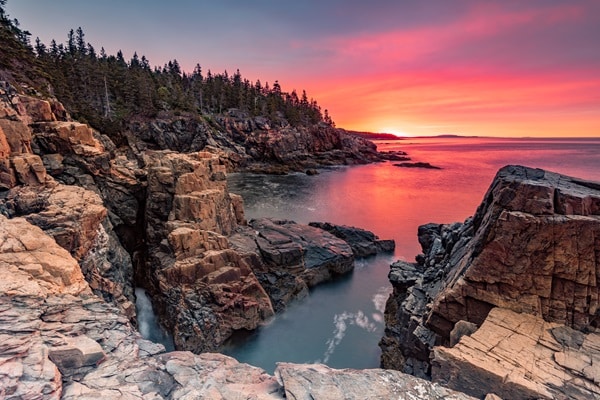
Summer in Acadia National Park is a celebration of maritime beauty, with warm weather making it a perfect time for hiking, biking, and water-based activities like kayaking and sailing. The park’s trails offer stunning views of the Atlantic Ocean, while the carriage roads provide a unique way to explore the interior landscapes. Bar Harbor, the nearby town, is vibrant with activity, offering dining and shopping for visitors. The island’s diverse habitats are alive with wildlife and blooming flora, making every visit a discovery. Though summer is Acadia’s busiest season, the beauty and variety of activities available make it a worthwhile time to visit.
Fall brings a tranquil beauty to Acadia National Park, with the deciduous forests showcasing vibrant fall foliage that contrasts strikingly against the rugged coastline. The cooler temperatures and fewer visitors create a serene environment for exploring the park’s natural wonders. This season is ideal for scenic drives along Park Loop Road, hiking to the summits for panoramic views, and photographing the stunning landscapes. The water remains a focal point, reflecting the autumn colors and offering peaceful moments beside its shores. For those seeking a quieter visit with the chance to see Acadia in a different light, fall provides an exquisite backdrop to experience the park’s majestic beauty.
Discover Your Perfect Season for Adventure
As you’ve journeyed through the seasonal wonders of America’s national parks, it’s clear that each offers its own unique beauty and adventure, waiting to be discovered at the right time. Whether you’re drawn to the wildflowers of spring, the lush greenery of summer, the vibrant colors of fall, or the serene snowcaps of winter, there’s a perfect season for your next outdoor adventure. Let this guide inspire you to plan your visit, embracing the natural rhythms of these majestic landscapes for an unforgettable experience.


